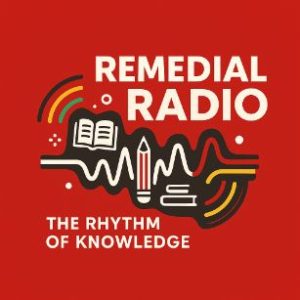Explore the meaning of patriotism and Uganda’s political journey since 1986 under the National Resistance Movement (NRM). Learn about its ideology, achievements, challenges, and solutions for a better Uganda.
Introduction
Since 1986, Uganda has undergone significant transformation under the leadership of the National Resistance Movement (NRM). To understand Uganda’s development, we must examine patriotism, the NRM ideology, and its impact on Uganda’s political, social, and economic sectors. This article provides a simplified yet insightful guide tailored for Senior 2 learners and anyone interested in Uganda’s post-1986 history.
What Is Patriotism?
Patriotism is the love, loyalty, and devotion one has for their country. It involves defending national interests, respecting national symbols, and promoting unity and development. In Uganda, patriotism has been encouraged to foster peace, hard work, and good citizenship, especially among the youth.
Political History of Uganda Since 1986
In January 1986, the National Resistance Army (NRA), led by Yoweri Kaguta Museveni, captured power after a long struggle against dictatorship and lawlessness. This marked the beginning of the NRM government. Since then, Uganda has seen relative political stability, democratization efforts, and constitutional reforms, including the introduction of multi-party politics in 2005.
Background of the NRM Ideology
The NRM ideology is based on democracy, nationalism, Pan-Africanism, and socio-economic transformation. These principles were formed during the bush war period and guide how the government operates. The focus is on unity, equity, and national development beyond tribal or religious divisions.
Why Was the NRM Formed? – The Ten-Point Program
The Ten-Point Program was developed to address Uganda’s historical problems such as poor governance, tribalism, and economic collapse. Below are the key points:
- Restoration of democracy
- Restoration of security
- Consolidation of national unity
- Defending national independence
- Building an independent, self-sustaining economy
- Improvement of social services (education and health)
- Ending corruption and misuse of power
- Redressing past mistakes through justice
- Promoting a mixed economy
- Supporting regional cooperation
These points aimed to rebuild Uganda after years of chaos and mismanagement.
Achievements of the NRM Government Since 1986
The NRM has made notable progress in various areas:
- Education: Introduction of Universal Primary Education (UPE) and Universal Secondary Education (USE)
- Security: Improved peace and stability in most parts of Uganda
- Infrastructure: Construction of roads, hospitals, and schools
- Health: Reduction in HIV/AIDS prevalence, expansion of health services
- Economic growth: Increase in GDP, foreign investment, and agricultural modernization
- Democracy: Introduction of a multi-party system and regular elections
Challenges Faced by the NRM Rule
Despite the achievements, the NRM government has faced several challenges:
- Corruption and misuse of public funds
- High unemployment among the youth
- Poverty and income inequality
- Political unrest and opposition crackdowns
- Poor service delivery in rural areas
- Environmental degradation
Limitations of NRM Performance in Social, Political, and Economic Areas
- Socially: Education and health services still lack quality in many rural areas.
- Politically: Accusations of limited political space and suppression of opposition.
- Economically: Despite growth, many Ugandans remain poor, especially in villages.
Solutions to the Challenges Faced by NRM
To improve its performance, the following solutions can be adopted:
- Strengthening anti-corruption laws and punishing corrupt officials
- Investing in vocational training to solve youth unemployment
- Supporting small-scale farmers with tools and training
- Encouraging peaceful political dialogue
- Improving transparency and accountability
- Balancing development between urban and rural areas
Conclusion
Uganda’s history since 1986 reflects both progress and persistent challenges. The NRM’s leadership has brought stability and growth, but for Uganda to thrive fully, all citizens—especially the youth—must embrace patriotism and contribute to nation-building. Understanding the past helps us shape a better future. Let us rise and build a Uganda where unity, peace, and development are for all.
Frequently Asked Questions (FAQs)
1. What is the meaning of patriotism in Uganda?
Patriotism means loving and being loyal to Uganda by promoting peace, unity, and development.
2. When did the NRM come to power in Uganda?
The NRM came to power in January 1986 after a five-year liberation struggle.
3. What are the four core ideologies of the NRM?
The NRM is guided by Democracy, Nationalism, Pan-Africanism, and Socio-Economic Transformation.
4. What are some achievements of the NRM government?
Some key achievements include UPE and USE programs, improved security, economic growth, and better health services.
5. What are some limitations of the NRM government?
Challenges include corruption, unemployment, poor rural services, and political intolerance.
6. How can Uganda overcome its current political and economic problems?
By promoting good governance, improving education, supporting youth employment, and fighting corruption.
Would you like me to convert this into a downloadable Word document, PDF, or a WordPress blog post format for easier publishing?


Leave a Reply